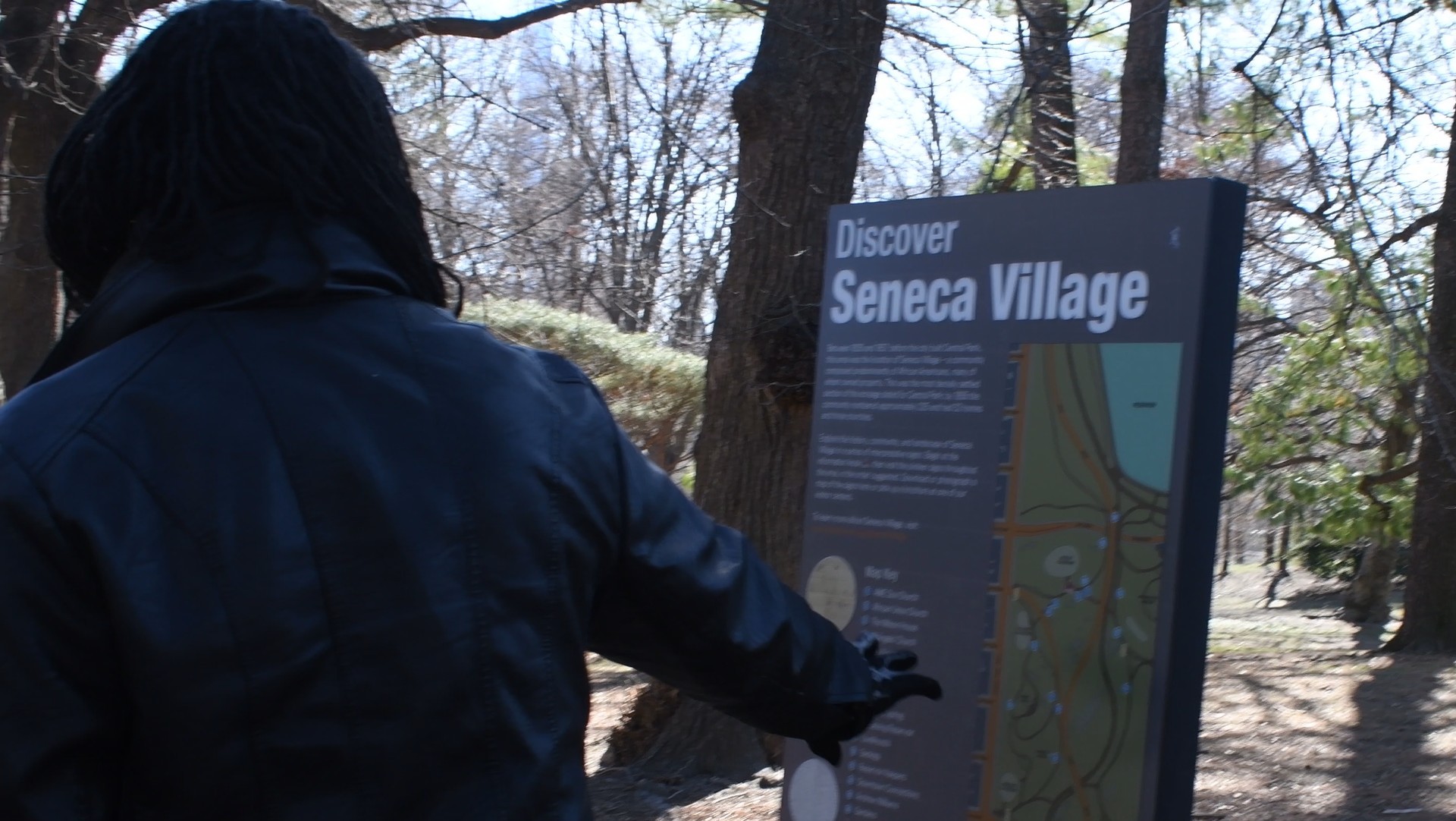City dwellers step off the train at Grand Army Plaza in Brooklyn with comfortable shoes and an appetite. On the menu are some of Prospect Park’s most hearty weeds, young flowers and roots.
These foodies came to Brooklyn recently to experience a taste of what grows in the 585-acre park. They are urban foragers for a day. Boldly pulling at flat green plants with tender leaves matting much of the area’s recently frozen dirt, they dust off the leaves on their jeans and indulge.
Forgoing Park Slope’s famous organic cuisine, water-boiled bagel shops and family-friendly Greek fare, people are here to discover what edible leaves are free for the taking—and eating.
Urban foraging is a unique way to eat locally. Foragers look for edible weeds, non-toxic mushrooms and colorful trees that bear fruits such as American persimmons — a deliciously sweet yellow or orange-tinged fruit with a tough skin, packing juice.
One man who knows where to locate these free juice bombs is “Wildman” Steve Brill.
He is “America’s go-to guy for foraging.” In his 60s, he’s been leading urban forages for decades since his first tour in 1982.
“I didn’t have the beard or the hat, and people said ‘you don’t look like a wildman’ so I went to the Army-Navy store,” he said. “I bought the hat and grew the beard and people said ‘you look like just what I though you were going to look like.’”
He gives off the aura of Sir Nigel Archibald Thornberry—the cartoon wildlife documentarian and nature expert—on the popular ’90s Nickelodeon show “The Wild Thornberries.” The two share a love for safari garb, the environment and for their daughters.
Brill drove to his Brooklyn tour from his home in Connecticut on a recent chilly morning. His daughter Violet, named after the purple flower that is “always tasty” to great outdoors lover, is his assistant. He jokes that she will take over the business. At 7, she can already identity many species of plants, mushrooms and more.
This was Brill’s first tour of his 30th year foraging. Tours still start in March and end in December.
Brill started off by leading the troop of 20 people to a green patch of chickweed growing alongside a fence.
Runners jogged by the walking path where tour-goers huddled, taking turns kneeling to see the small plant that Brill describes as having five trademark parted flowers. Common chickweed grows all year long, thriving in sunny, partially shaded areas.
Fun fact courtesy of Brill: chickweed gets its name because chickens love to nibble on it.
It’s considered a common weed in the U.S., but chickweed capsules as a relief for eczema, coughs, rheumatoid arthritis, weight loss, support fat digestion, cellulite and much more.
Most of the urban foragers were first timers, but none hesitated to eat clumps of chickweed.
“It tastes like corn on the cob,” Brill said.
More like the cob itself, according to the scavengers.
Brill offers tons of information about each plant and injects historical knowledge into each lesson.
“The herbalist would give them chickweed,” he said. “It has more vitamins than a health food store. They would very quickly rebuild their strength.”
Brill usually leads tours through tri-state area’s most wild areas, like Central Park, Inwood Hill Park, Queen’s Alley Pond Park, the Appalachian Trail and Tarrywile Park in Danbury, Conn.
As a nature guide, he helps reconnect urbanites with their green surroundings.
Despite the long histories and scientific facts about plants, it’s not all serious. There are a lot of jokes and sweet treats. For each tour, he brings baked goods or ice cream he’s made from ingredients on urban forages. He brought small chocolate truffles to this tour, made with “coffee essence” from Kentucky Coffee Tree seeds — definitely not Starbucks seeds.
Gary Levingston, from Lindenhurst, Long Island, didn’t know what to expect on the food tour of the park, but walked away with a full bag of field garlic, chickweed and common evening primrose roots.
“Hopefully it will never come in handy,” Levingston joked. “It’s interesting to know and pass on.”
Victoria Gershik, from Sheepshead Bay, Brooklyn, looked forward to making Sassafras tea — boiling a gallon of water with the root — and possibly Sassafras jello.
“This is the first time I’ve been done a tour with him,” Gershik said. “Learning about plants, it’s just so much fun.”
Many of the day’s foragers said they would be back for more free greens and natural edibles.
“This was a very good start to my 30th year,” Brill said.

